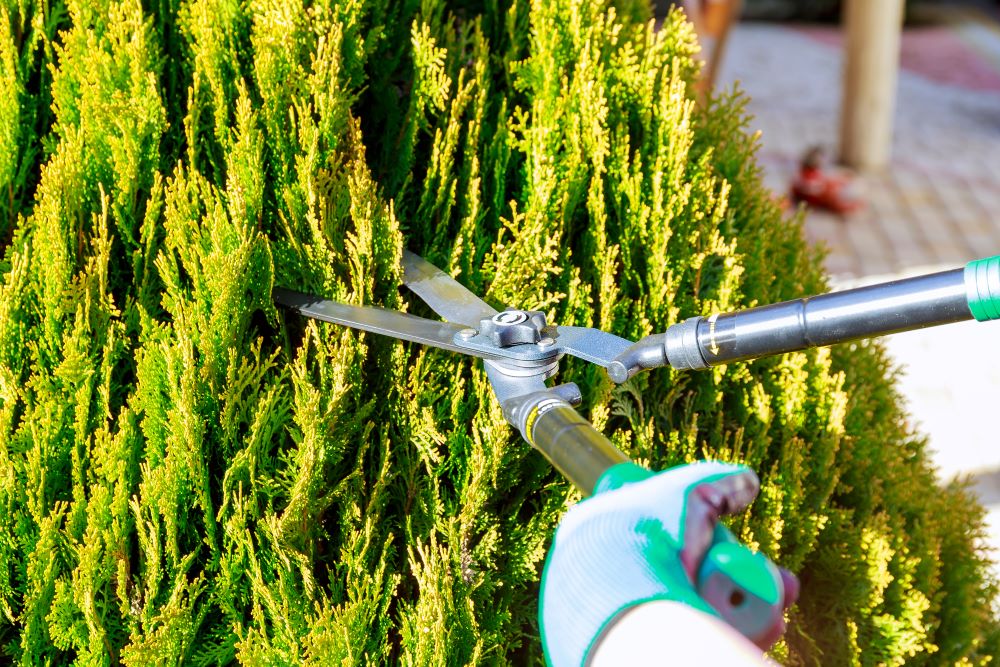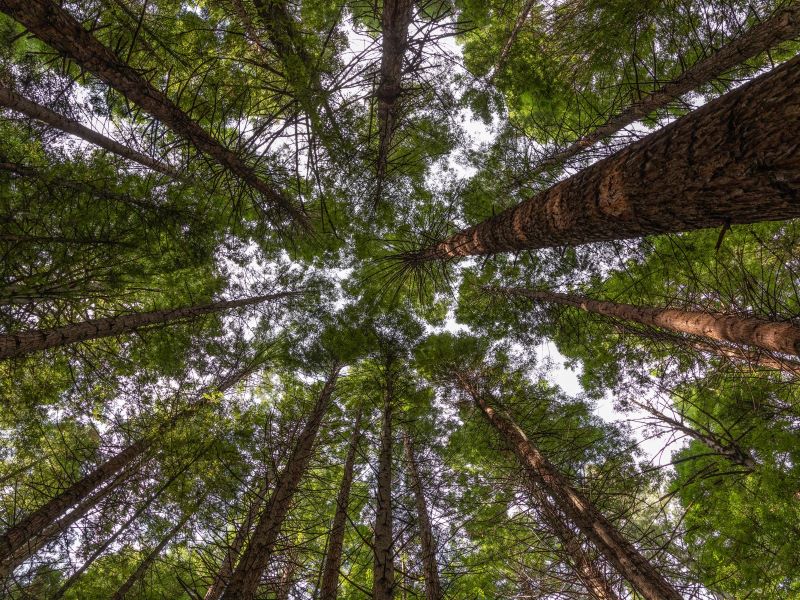Rotorua’s volcanic landscape boasts a remarkable variety of trees, both native and exotic. While towering giants like pōhutukawa and totara or Redwood might require the expertise of an arborist, smaller trees add charm and function to your garden. Here’s how regular maintenance from a professional garden maintenance company in Rotorua can keep your smaller trees healthy and beautiful.
Keeping Your Rotorua Garden Thriving: Tree Trimming for Smaller Beauties
Rotorua’s volcanic landscape boasts a remarkable variety of trees, both native and exotic. While towering giants like pōhutukawa and totara might require the expertise of an arborist, smaller trees add charm and function to your garden. Here’s how regular maintenance from a professional garden maintenance company in Rotorua can keep your smaller trees healthy and beautiful.

Common Smaller Trees in Rotorua Gardens:
Kōwhai (Sophora microphylla)
This stunning native tree is a true showstopper in spring with its vibrant yellow, pea-like flowers. Regular light trimming, ideally right after flowering, encourages bushier growth and even more blooms next season. Aim to remove any dead, diseased, or inward-growing branches to maintain a compact, bushy shape.
Pohutukawa (Dwarf Varieties)
Don’t have the space for a towering pōhutukawa (New Zealand Christmas tree)? Several dwarf varieties like the ‘Little Scarlet’ or ‘Anzac’ offer the same festive red blooms in a more manageable size, perfect for smaller gardens. Trimming focuses on shaping the tree to your preference, whether it’s a rounded form, a lollipop shape, or something more creative. Remember to remove any unwanted suckers or shoots that sprout at the base of the trunk.
Manuka (Leptospermum scoparium)
This versatile shrub is a true workhorse in the Rotorua garden. In summer, it produces beautiful white or pink flowers, and its attractive, feathery foliage can be shaped into a dense privacy hedge or kept as a standalone feature. Regular trimming throughout the year promotes healthy, dense growth. For hedges, aim for a clean, straight shape, while standalone plants can be trimmed to encourage a bushier form or to highlight interesting branches.
Corokia cotoneaster
A compact evergreen with vibrant green foliage and bright yellow flowers in spring, corokia is ideal for adding pops of colour to borders or containers. Light trimming after flowering helps maintain its desired shape and size. You can keep it low and bushy for borders or allow it to grow taller and prune it to a rounded or espaliered form (trained flat against a wall) for containers.
Flax (Harakeke)
This iconic New Zealand plant comes in various forms. From the tall flax (Phormium tenax) to the dwarf varieties like Phormium’ Little Magician’. Trimming flax involves removing the old flower stalks after flowering to encourage new growth and maintain a tidy appearance. For a wilder look, you can leave some of the flower stalks on. But be sure to remove any dead or diseased leaves throughout the year.
Benefits of Professional Trimming for Smaller Trees:
- Enhanced Health: Proper trimming by a garden maintenance professional goes beyond just removing diseased or dead branches. They have the expertise to identify potential problems early on and make targeted cuts to prevent the spreading of disease or infestations. This proactive approach ensures your trees stay healthy and vibrant for years.
- Maximised Aesthetics: Garden maintenance professionals are skilled in the art of tree shaping. They can transform your smaller trees into beautiful focal points in your garden design. Whether you desire a rounded form for a standalone kōwhai. A meticulously pruned hedge of manuka for privacy, or an espaliered corokia gracing your wall, a professional can achieve the exact look you envision.
- Improved Light Penetration: Light pruning techniques employed by garden maintenance professionals allow for better sunlight distribution throughout the canopy of your smaller trees. This benefits not only the tree itself by promoting healthy growth. But also allows more light to reach other plants growing beneath the canopy. This creates a thriving ecosystem within your garden.
- Increased Flowering: Trimming your smaller trees at the right time and in the proper way can significantly stimulate flower production. Professionals understand the specific needs of each tree variety, like kōwhai and manuka. They can ensure your trimming promotes abundant blooms for you to enjoy throughout the season.
When to Call a Garden Maintenance Rotorua Professional:
- Specialised Techniques: Trimming smaller trees often involves more than just lopping off branches. Tasks like crown thinning, which consists of removing select branches to improve light penetration and air circulation within the canopy, or espaliering, the art of training branches onto a flat surface like a wall or fence, require specific skills and knowledge. A garden maintenance professional has the expertise and tools to handle these tasks efficiently. As well as ensure the health and beauty of your tree.
- Extensive Trimming: Even for smaller trees, extensive trimming projects can be time-consuming and require specialised equipment like loppers, chainsaws, or cherry pickers. A garden maintenance company can handle these larger jobs efficiently. Saving you time and ensuring the safety of both yourself and your trees.
- Uncertain Cuts: If you’re unsure about the ideal pruning technique for your specific tree variety or the severity of a trimming project. It’s always best to call in a professional. A qualified garden maintenance professional can assess your trees, recommend the most appropriate trimming approach. And ensure the cuts promote healthy growth and maintain the desired shape.

Remember
While a garden maintenance company can handle most smaller tree-trimming tasks. Don’t hesitate to call in a qualified arborist if your tree becomes overgrown, shows signs of severe disease, or poses a safety hazard.
By investing in regular maintenance by a qualified garden maintenance company in the Rotorua region, your smaller trees will thrive. Adding beauty and functionality to your garden for years to come.
Check out our article on choosing plants for your New Zealand garden, too.